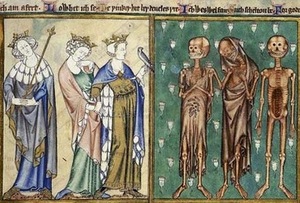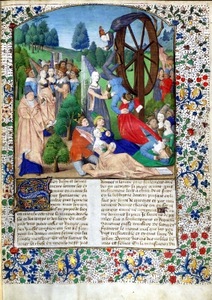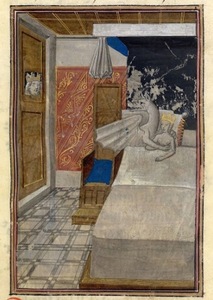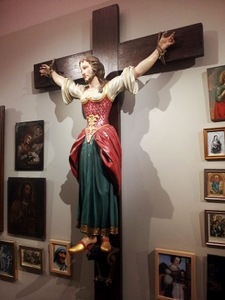Concept of the Other World in Europe of the Middle Ages 0
In brief: The Middle Ages are closely related with various mystical legends, ghosts, cult of the dead. Even the special type of sermons de mortuis (about the dead) spread in those times – virtues of some dead person were aggrandized and sins were forgotten in such sermons.
Therefore, the author speaks about such believes that were alive in Western Europe and the Grand Duchy of Lithuania. In the article the author presents the view of the other world pictured by the English historian of the Middle Ages Robert Bartlett.
There were many stories about the convergence of supernatural worlds in the Western Europe and the Grand Duchy of Lithuania too. One of the famous works was poem of the French ministrel Baudouin de Condé (1240 - 1280) “Le dit des trois morts et des trois vifs” (“A Story about Three Dead and Three Alive Persons”, 1280). The cult of the dead starts from the end of the 16th, 17th century, the Baroque period in the Grand Duchy of Lithuania. Stories about ghosts similar to western stories were spread in the country at that time.
The cult of saints should also be mentioned. It was believed that saints could influence life of living people. St. Mary Margaret was prayed to during childbirth, St. Apollonia treated aches of teeth, etc. The most honourable saints may be attributed to the ruling dynasties of Europe. Each ruler wanted to be similar to his great-grandfathers by good deeds. For instance, there were too saints in the dynasty of Jogailaičiai: St. Kasimir (1458 - 1484) and St. Jadvyga (1373 - 1399), wife of the Polish king and duke of the Grand Duchy of Lithuania Jogaila (1348 - 1434).
Ending the article, the author generalises that the other world has interested the humanity from the first civilisations. The man wants to lift the veil that separates this world from sacral spheres and is willing to see miracles even in the most simple things.












